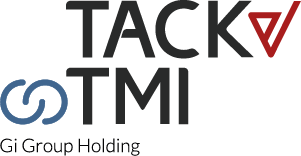Empowering Women in Leadership: Overcoming Barriers and Driving Change
The Persistent Challenges Women Face in the Workplace
In recent years, significant changes have occurred both in and outside of the workplace, highlighting critical issues related to equality and diversity, with gender equality at the forefront of many conversations. As a result, there has been a growing awareness of the need for gender diversity in leadership positions, where women are significantly underrepresented.
Breaking Barriers and Creating Equal Opportunities
Women have historically faced discrimination in many areas, including pay, promotions, and leadership roles. Organisations are under pressure to be more inclusive and diverse. Early momentum for change was largely in response to new legal requirements. A stronger force is now the expectations of employees, customers, and stakeholders.
Research conducted by McKinsey and Company in 2022 shows a clear downward trend in female representation as women progress in their careers. This trend is not new, but it is now more apparent than ever before. Despite the growing awareness of the need for gender diversity in leadership, many organisations continue to struggle in their efforts to effect meaningful change.
Unfortunately, all too often, leaders may talk about the importance of gender equality, but these conversations do not translate into necessary actions. Achieving gender equality in leadership is a multifaceted issue that requires identifying the problem and acknowledging the disparity. However, the lack of action is a significant obstacle to progress. To achieve meaningful change, it is essential to not only acknowledge the problem but also take tangible steps towards addressing it.
Understanding the Challenges Faced by Women in Advancing Their Careers
So, where do we begin?
Women often face a range of challenges early on in their careers that can persist throughout their working lives. Women continue to earn less than men on average and are often overlooked for promotions or other opportunities for advancement.
Rachel Thomas, co-founder, and CEO of LeanIn.org, commented, “In reality, women are disadvantaged from the get-go and never really catch up.” This initial misstep contributes as a catalyst for stunting the development of many women in the workplace and limiting their opportunities of advancing further in their ambitions. Missteps can come in various forms, for example, access to development roles, investment in career avenues, and a lack of sponsorship. To further highlight this, reports by McKinsey show that for every 100 men promoted to the first-level manager, 86 women are promoted. A deeply concerning fact for organisations, meaning men significantly outnumber women at the manager level, and women can never catch up as there are fewer women in the pipeline to promote to senior leadership positions.
Despite their demonstrated abilities, women continue to face significant barriers to success in leadership roles. Research by Harvard Business Review has shown that women leaders outperform men in 17 of 19 competencies that are predictive of outstanding leadership. This is a powerful testament to the capabilities of women in the workplace. Yet many women continue to be held back by systemic gender discrimination. BrightBlue’s research on gender discrimination and human rights is extensive and reveals the deep-seated barriers that many women face when attempting to climb the corporate ladder. Some of the most common barriers women face are:
- Gender bias and stereotypes
- Pay gap
- Lack of representation in leadership
- Limited access to mentors and sponsors
- Work-life balance challenges
- Implicit bias in promotion and hiring decisions
- Lack of leadership development opportunities
- Societal expectations and cultural norms
- Male-dominated networks
- Double standards and scrutiny
- Unconscious bias in performance evaluations
For organisations looking to promote diversity and inclusivity, it is critical to acknowledge and address these barriers to provide equal opportunities for women to succeed in leadership positions.
Transactional vs. Transformational Change: A Path to Inclusivity
Have you ever come across the terms “Transactional Change” and “Transformational Change” in the context of diversity and inclusion at work? If not, let me break it down for you.
Transactional change is a more surface-level approach to diversity and inclusion efforts. It involves setting specific goals and targets for diversity representation and implementing systems and incentives to achieve those goals. However, it often lacks a deeper understanding and connection to the values and culture of the organisation.
On the other hand, transformational change is a more holistic and fundamental approach to diversity and inclusion efforts. It involves a shift in mindset and values and a commitment to integrating diversity and inclusion into the very fabric of the organisation. This requires a strong foundation, clear goals, accountability, and a reward system that aligns with the company’s values and mission.
It’s important to note that focusing solely on the business case for diversity and inclusion may miss opportunities and lack authenticity in approach. To truly make a lasting impact and transform the culture of the organisation, it’s crucial to have a core, values-based “rallying cry” that everyone can get behind.
This can be achieved through integrating various initiatives, such as a new ethos and values or general diversity-driven incentives and ensuring that are encouraged and taught to all. It’s also important to measure the impact, as data-driven insight generates the understanding of the possibilities for growth at a human and organisational level from helping to build a diverse and sustainable pool of talent for the future of the business.
Personalisation, Connection, and Intrinsic Motivation: Driving Effective Change
But how do we make sure these initiatives are effective and meaningful?
It all comes down to personalisation and connection. Leaders in the business must communicate why getting more women into leadership positions is important to them and how it aligns with the company’s values and mission. This personal narrative can help to drive and support change on a deeper, emotional level, and a different motivation takes over: intrinsic motivation. There are multiple models of motivation, many of which orientate around three basic intrinsic needs:
- Autonomy (personal accountability)
- Competence (capability and efficacy)
- Purpose (personal identity)
When employees are intrinsically motivated to support a particular cause, they become key factors in an organisation’s ability to innovate and adapt to new causes or missions. This level of personal buy-in is crucial for turning transactional change into transformational change. Any commitments and actions driven organisationally must address these fundamental intrinsic motivations speaking to all genders.
Of course, accountability goes hand in hand with transparency. Failing to meet diversity targets or quotas will open the organisation to scrutiny and negatively affect its reputation and stakeholder capitalism. This is why it’s important to analyse data intentionally and be clear about the goals and standards for corporate gender representation.
With the 2022 European Commission’s target of achieving at least 40% diversity representation in leadership positions, it’s important to assess where your business stands and what steps you can take to achieve this goal. It’s not just about meeting the target but going beyond it through transformational change that fosters a more inclusive and diverse workplace. If they haven’t already, organisations need to start thinking about how they can create environments that not only meet targets but also promote a true culture of equality, diversity, and inclusivity.
Empower women in leadership in your organisation. Contact us now to discuss our Women in Leadership solutions. Our solutions include in-company programmes, open programmes and apprenticeship programmes.
Let us help you drive positive change in your organisation.
Related articles

Giving Forward: The Scottish Palliative Care Association Complete Nationwide Women in Leadership Programme
The Scottish Palliative Care Association is working with The Leadership Factory – a Tack TMI company, to run a nationwide women in leadership development programme as part of its annual Giving Forward CSR initiative.
Read more >

